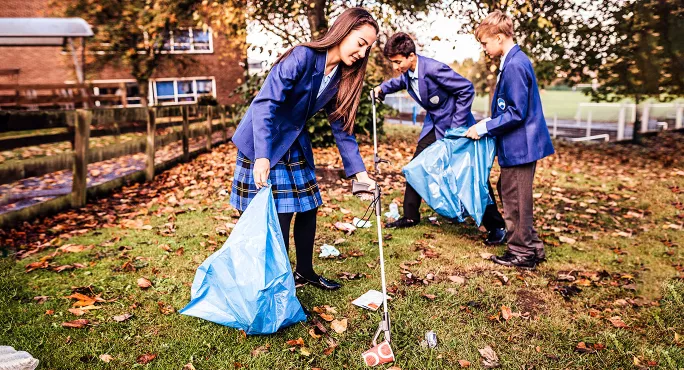Schools can boost teacher wellbeing by running social or community projects for pupils, according to a report published today.
The Royal Society for the Arts (RSA) has produced a study exploring teachers’ experiences of “youth social action” work in primary schools.
“Youth social action” refers to activities that make a positive difference to others or the environment, such as a project to help homeless people.
The RSA found that these types of projects have a “triple benefit” for pupils, the community and for teachers by improving wellbeing.
However, it also warns that survey findings suggest more than six in 10 teachers have not been involved in youth social action in their schools.
The report’s findings are based on 10 case study primary schools that worked with the RSA and a survey of more than 2,000 teachers carried out by Teacher Tapp.
The case studies include a project to support homeless people, an art, design, music and creative writing exhibition for the community hosted by a school, and a lobbying campaign by pupils to protect the environment.
The Teacher Tapp survey asked teachers about the potential benefits of their school carrying out youth social action work.
Just under two-thirds of respondents (62 per cent) thought that youth social action would help them to build more positive relationships across the school community.
The second most popular response, at 46 per cent, was that teachers felt participating in such work would contribute to improved wellbeing. The RSA said this has been backed up by the case study schools it has worked with.
More than four in 10 teachers who responded (43 per cent) said that they would feel more empowered in their community, and 39 per cent said they thought youth social action would be a positive for school culture.
However, around half of the teachers who responded (47 per cent) said they had never taken part in this sort of project through school. Another 15 per cent said they had never done it before, but would like to do it in the future.
When asked what barriers were stopping more social action work from taking place, the most common response (66 per cent) from teachers was that schools do not have the time or resources.
The report provides examples of the impact that youth social action has had on teachers from the case study schools.
St Bernard’s Roman Catholic Primary School, in Cheshire, used English classes to write letters to people and organisations who have the power to shape responses to environmental crises.
Emily Reid, a senior leader at the school, said: “We found that the staff were just buzzing to come into school [and] were passionate about what they were doing.”
The report also found that social action work afforded greater freedom to teachers.
Today’s RSA report follows a call last month for more to be done to promote youth work opportunities in schools.
The Better together: Youth work with schools report, commissioned by the National Youth Agency, suggested that Ofsted’s inspection framework should be updated to assess the quality, consistency and longevity of youth work and other partnerships that support the mental health and wellbeing of young people.




